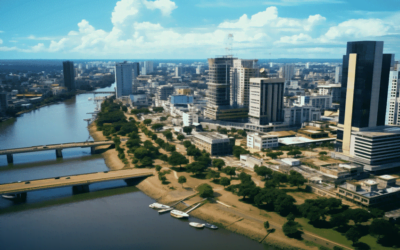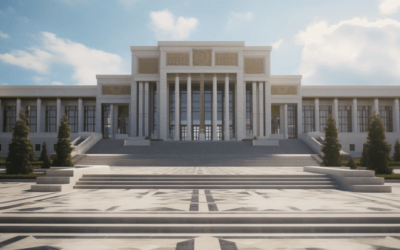You know, if you’ve ever found yourself pondering the ins and outs of drone laws in Vietnam, you’re not alone. I get it; drones can be fascinating gadgets, whether you’re an enthusiast or just curious.
But let’s face it, understanding Vietnam’s drone laws can be a bit perplexing. It’s like stepping into a maze of regulations. Don’t worry; I’ve been there, too.
In my quest to unravel the mysteries of Vietnam’s drone laws, I embarked on a research journey. I combed through the rules, sought out the latest updates, and even had some insightful conversations with experts in the field.
The result? I’ve got the answers you’re looking for. I’m here to share my findings, so you don’t have to navigate this regulatory maze alone.
So, if you’re eager to demystify Vietnam’s drone laws and fly your drone with confidence, you’re in the right place. In the upcoming sections, I’ll break down the regulations, the dos and don’ts, and provide practical advice to ensure you’re fully informed.
No more confusion, no more guesswork – just clear, concise guidance. So, keep reading, and together, we’ll unravel the complexities of Vietnam’s drone laws and pave the way for safe, enjoyable flights.
Registration Requirements

Okay, let’s start with the essentials: registration. When it comes to flying your drone in Vietnam, it’s important to understand the registration process and why it’s a vital step in your journey. So, let’s dive into the nitty-gritty of registration requirements in Vietnam.
Mandatory registration for drones in Vietnam
In Vietnam, they take their drone regulations pretty seriously, and mandatory registration is a big part of it. If your drone tips the scales at 250 grams or more (which isn’t too hefty, to be honest), you’re required to get it registered.
Think of it as the government’s way of keeping tabs on the skies. I know it might sound a bit bureaucratic, but there’s a reason behind it, one that’s all about safety and responsibility.
Criteria for drones that must be registered (weight threshold)
Now, you might wonder why the 250-gram cutoff? Well, this weight limit isn’t arbitrary. It’s the line in the sand that separates the toy drones from the ones that could potentially pose some risks if they go rogue.
So, if your drone is in that weight range, it falls under the registration radar, and you’ll need to follow the rules. It’s a way to ensure that drone operators are accountable for their flying machines.
Process for drone registration with the Civil Aviation Authority of Vietnam (CAAV)
So, how do you go about registering your drone? Well, this part can be a bit bureaucratic, but it’s a necessary step. The Civil Aviation Authority of Vietnam (CAAV) is the go-to place for all things drone registration.
They’ve got an online platform that simplifies the process, but you’ll need to provide some key information, like your personal details and your drone’s specs.
It might take a little time, but in the end, you’ll be on the right side of the law, and that’s what matters most when exploring the skies in Vietnam.
Also Read: Venezuela Drone Laws 2024
No-Fly Zones

Now, let’s talk about the places you can’t go – the no-fly zones. If you’ve ever looked up at the sky and thought about taking your drone on a journey, you should know where you can and cannot venture. It’s all about safety and respecting the rules of the airspace.
Explanation of restricted areas where drones are prohibited
So, here’s the deal: drones aren’t allowed just anywhere in Vietnam. Certain areas are a no-go, and that’s because they’re considered restricted airspace.
Think of these areas as the “Do Not Enter” zones of the sky. These restrictions are in place for various reasons, from ensuring passenger plane safety near airports to protecting sensitive military installations.
Key no-fly zones, including airports, military installations, and sensitive areas
Airports, as you’d expect, are among the top no-fly zones. Flying a drone near an airport can pose a significant risk to aircraft taking off and landing. Then there are military installations – you don’t want to cross paths with those.
And let’s not forget about sensitive areas; they’re off-limits too. The authorities have good reasons for marking these zones as no-fly areas, and it’s essential to adhere to these rules to ensure everyone’s safety.
Consequences of flying in prohibited areas
Now, you might wonder what happens if you disregard these no-fly zones and go ahead with your drone flight. Well, there are consequences, and they can be quite severe. It’s not just a slap on the wrist.
Penalties can range from fines to legal actions, and these rules are in place for good reasons. So, if you’re flying your drone in Vietnam, make sure you know where you’re welcome and where you’re not. It’s all about respecting boundaries and ensuring a safe and enjoyable experience for everyone.
Also Read: Vatican City Drone Laws 2024
Altitude Limits
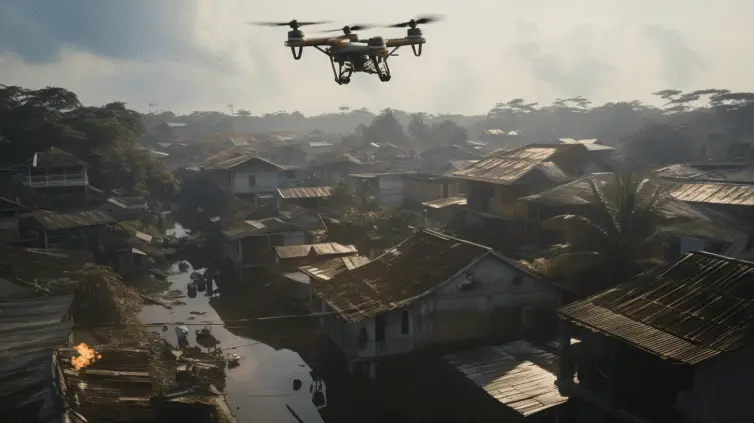
Alright, let’s lift off the ground and talk about altitude limits. You see, the skies have their own rules, and in Vietnam, there’s a cap on how high you can go with your drone. It’s not just about reaching for the stars; it’s about understanding the boundaries.
Maximum allowed altitude for drone flights in Vietnam
Vietnam’s drone laws set a maximum altitude for your aerial adventures: 120 meters above ground level.
So, if you’re thinking about soaring to the stratosphere or even just a few kilometers up, think again. The legal ceiling is right there at 120 meters. It might sound limiting, but there’s good reason behind it.
The rationale behind altitude restrictions
You might wonder why there’s a cap on the altitude in the first place. Well, it all boils down to safety. Keeping drones within a specific altitude range helps avoid conflicts with other aircraft, whether it’s commercial flights, helicopters, or other drones.
It ensures that the skies remain clear and the risk of collisions is minimized. So, it’s all about sharing the airspace responsibly.
Safety considerations and potential risks associated with exceeding altitude limits
Now, if you’re tempted to push the boundaries and go higher than that 120-meter mark, you should consider the potential risks. Going beyond the limit can result in a few problems, including airspace violations, accidents, and even potential conflicts with other air traffic.
It’s not just a matter of rules; it’s a matter of safety, both for your drone and for the aviation ecosystem. So, when it comes to altitude, it’s best to keep your feet—or your drone, in this case—firmly on the ground.
Also Read: Vanuatu Drone Laws 2024
Visual Line of Sight (VLOS)

Now, let’s chat about something crucial when you’re piloting your drone in Vietnam: Visual Line of Sight or VLOS. It’s not just about keeping an eye on your drone; it’s a rule that ensures the safety of your flight and those around you. Let’s explore this essential aspect of responsible drone operation.
Requirement for maintaining visual contact with the drone
Here’s the deal: you’re required to maintain visual contact with your drone at all times while it’s in the sky. That means you need to keep it in your line of sight. It might sound like common sense, but it’s more than that—it’s a fundamental rule.
Why? Because seeing your drone ensures you can react to any unexpected situations or changes in the environment, which is crucial for the safe operation of your drone.
Importance of VLOS for safe and responsible drone operation
Why is VLOS so vital? Well, imagine you’re flying your drone, and it’s out of your sight. It could drift into a no-fly zone, bump into a tree, or even collide with something or someone.
Maintaining visual contact allows you to steer your drone away from any potential obstacles, avoid other aircraft, and ensure it doesn’t become a nuisance or hazard to others. In short, it’s all about being a responsible drone operator.
Tips for adhering to VLOS guidelines
So, how do you make sure you’re following the VLOS guidelines? Start by choosing a suitable location with a clear line of sight. Avoid flying your drone too far or behind obstacles that block your view. It’s also wise to fly in good weather conditions with clear visibility.
And remember, flying with a friend can be helpful—one person can keep an eye on the drone while the other operates it. By following these tips and adhering to VLOS, you’ll not only obey the rules but also make your drone flights safer and more enjoyable.
Also Read: Uzbekistan Drone Laws 2024
Operational Restrictions

Now, let’s talk about some practical rules when it comes to flying your drone in Vietnam. It’s not just about where and how high you fly; there are specific operational restrictions to consider. Let’s take a closer look at these to ensure you’re flying your drone responsibly.
Regulations regarding flying over crowds, people, and public events
Flying your drone over a bustling crowd, people, or public events might seem tempting, but it’s a strict no-go in Vietnam.
The authorities are keen on keeping everyone safe, and drones buzzing overhead can be a hazard. So, steer clear of such scenarios to avoid accidents and ensure that drone flights remain enjoyable for all.
Restrictions on night-time drone operations
Night flights can be captivating, but in Vietnam, there are some restrictions you should be aware of. If you’re planning to explore the night sky with your drone, you need special approval from the Civil Aviation Authority of Vietnam (CAAV). They’re the ones to grant permission, and it’s all about ensuring your flight is safe and sound even when the stars are out.
Special considerations for flying in urban and rural areas
Whether you’re in the bustling heart of a city or the tranquil countryside, your drone flights need some extra attention. In urban areas, you’ve got to be mindful of the densely populated neighborhoods and follow the regulations.
In rural areas, while it might seem more open, you should still be considerate and fly in a way that respects people’s privacy and property. It’s all part of being a responsible drone operator, no matter where you’re exploring the skies.
Also Read: Uruguay Drone Laws 2024
Permits and Special Operations

Now, let’s get into the nitty-gritty of permits and special operations. Flying your drone in Vietnam for commercial purposes or unique projects might sound exciting, but it comes with its own set of rules. It’s all about following the right procedures and making sure everything is in order.
Overview of permits and approvals for commercial drone operations
So, you’ve got a drone and want to put it to work for commercial ventures in Vietnam. Well, there are specific permits and approvals you’ll need to obtain.
These cover everything from aerial photography to surveying, and they’re necessary to ensure that your business activities comply with the law. It might seem like a bit of paperwork, but it’s all about keeping things safe and regulated.
Application process for special drone operations (e.g., research, filming)
Now, if your drone operations fall into the “special” category, like research or filming, there’s a specific application process to follow. It involves contacting the Civil Aviation Authority of Vietnam (CAAV), the gatekeeper when it comes to drone permits.
They’ll evaluate your case, making sure your project aligns with the regulations and doesn’t pose any risks. It’s all about ensuring your activities are well-structured and safe.
Role of the CAAV in evaluating and granting permits
The CAAV plays a crucial role in this whole process. They evaluate your application and determine whether your drone operation aligns with the regulations.
They’re the ones who grant permits and approvals, making sure that everything is in line with the law. It’s their way of keeping a close eye on the drone activities in Vietnam, ensuring both safety and legality. So, if you’re thinking about diving into the world of commercial drone operations or special projects, you’ll want to get familiar with the CAAV and the procedures they have in place.
Also Read: United States Drone Laws 2024
Privacy and Data Protection
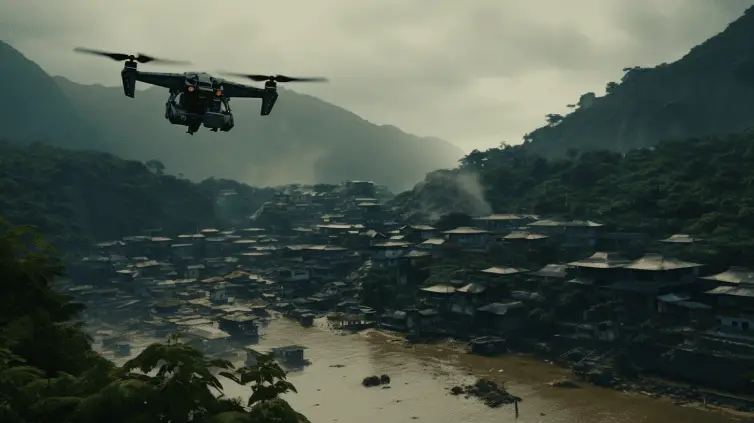
Now, let’s talk about something that often gets overlooked in the world of drones – privacy and data protection. We’re not just flying machines; we’re capturing images and data. And with great power comes great responsibility. So, let’s explore the privacy concerns and data protection in the realm of drone usage.
Discussion of privacy concerns related to drone usage
When we’re up there in the sky with our drones, it’s easy to forget that we’re not the only ones with eyes on the ground. Privacy concerns can’t be ignored. Your drone might capture images of people, their property, or even intimate moments.
It’s essential to be aware of this and act responsibly. Imagine if someone flew a drone over your backyard – you’d want them to respect your privacy too, right?
Compliance with data protection laws when collecting images or data
The images and data you collect with your drone may contain personal information. So, it’s crucial to respect data protection laws. These laws are there for a reason, and they require you to handle data with care. Be mindful of what you’re capturing and how you’re using it.
Seek proper consent when necessary, and ensure you’re not violating anyone’s rights in the process. It’s about flying responsibly and ethically.
Best practices for respecting individuals’ privacy while operating drones
To be a responsible drone operator, it’s important to follow best practices when it comes to respecting individuals’ privacy. Fly at a safe distance from people and their property. Don’t zoom in on individuals or invade their personal spaces.
Always ask for permission if you plan to capture images in a sensitive or private setting. It’s all part of being a courteous drone pilot, ensuring that you enjoy your flights while respecting the privacy of others.
Also Read: United Kingdom Drone Laws 2024
Enforcement and Penalties

Let’s talk about the not-so-fun part of drone flying – enforcement and penalties. In Vietnam, drone regulations aren’t just guidelines; they’re backed by consequences for non-compliance. So, it’s essential to understand what’s at stake when you’re up in the sky with your drone.
Consequences of Violating Drone Regulations in Vietnam
First things first, what happens if you break the rules? Well, there are consequences, and they’re not just a gentle tap on the wrist.
Violating drone regulations in Vietnam can lead to some serious trouble. These rules are in place for a reason, primarily to ensure safety, and disregarding them can have significant repercussions.
Potential fines, legal actions, or other penalties for non-compliance
So, what kind of penalties are we talking about? It can range from fines to legal actions. Flying your drone in restricted zones, invading people’s privacy, or simply breaking the rules can result in hefty fines. In more severe cases, you might even find yourself dealing with legal issues. It’s a sobering reminder that rules exist to be followed, and breaking them isn’t worth the risk.
The importance of educating drone operators about the consequences
To navigate the world of drone regulations safely, it’s crucial to educate yourself and other drone operators about the potential consequences of non-compliance.
Understanding the rules and the penalties that come with breaking them is a vital part of being a responsible drone pilot. It’s not about scaring you away from drone flying, but rather about ensuring that you can enjoy it responsibly and without the worry of legal issues.
Also Read: United Arab Emirates Drone Laws 2024
Updates and Changes

Now, let’s talk about the ever-evolving world of drone regulations. You see, these rules aren’t set in stone; they can change over time. It’s important to be in the loop about these changes to ensure that your drone adventures remain safe, legal, and hassle-free.
Information on how drone regulations can change over time
Drone regulations can change more often than you’d think. New technologies, safety concerns, and evolving industry standards can lead to updates in the rules. So, what’s allowed today might not be tomorrow.
Keeping an eye on these changes is crucial, as they directly impact how you can operate your drone in Vietnam.
Importance of staying informed about the latest regulations and updates
Staying informed is key. You wouldn’t want to be caught off guard by a regulation change that affects your flights. Understanding the latest rules helps you plan your drone adventures more effectively and ensures that you’re always on the right side of the law. It’s about being a responsible and knowledgeable drone pilot.
Resources for checking the most recent drone laws in Vietnam
So, where do you find these updates? Resources like the Civil Aviation Authority of Vietnam (CAAV) website are your go-to. They often provide the most up-to-date information on drone regulations.
Keeping an eye on official sources and industry news can help you stay ahead of any changes. It’s all about taking a proactive approach to your drone hobby or business and staying informed about what’s happening in the drone world.
Also Read: Ukraine Drone Laws 2024
Final Thoughts on Vietnam Drone Laws
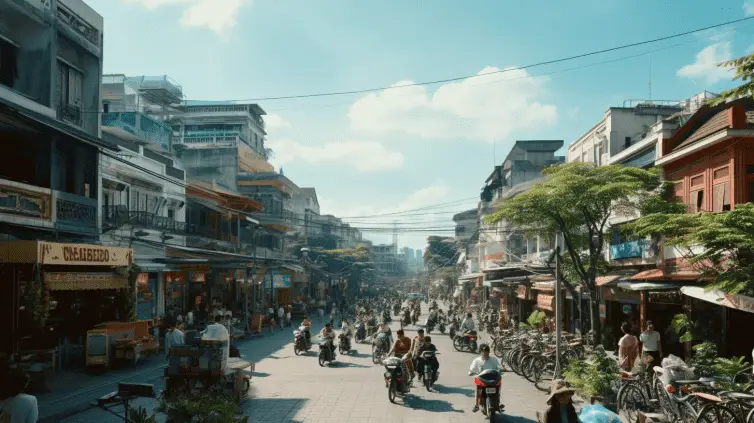
Alright, it’s time to wrap things up and land our drone safely. We’ve covered a lot about Vietnam’s drone laws, and here’s where we bring it all together.
So, what have we learned? We’ve delved into the mandatory registration of drones, the no-fly zones, altitude limits, the importance of visual line of sight, operational restrictions, permits, privacy concerns, enforcement, and the ever-evolving regulations. These are the pillars of responsible and safe drone operation in Vietnam.
The key takeaway here is to always operate your drone responsibly and safely. Remember, it’s not just about flying a cool gadget; it’s about understanding the rules and respecting the airspace and the people on the ground.
Being a responsible drone operator means ensuring the safety of your flights, respecting privacy, and abiding by the regulations.
My parting advice? Stay informed and compliant. Keep an eye on the latest regulations, as they can change over time.
The Civil Aviation Authority of Vietnam (CAAV) is your primary source for updates. By staying in the loop and following the rules, you can enjoy the incredible world of drone flying while keeping everyone safe and maintaining the honor of this exciting hobby. Happy flying!
Also Read: Uganda Drone Laws 2024
Frequently Asked Questions
1. Can I fly my drone in Vietnam without registering it?
No, if your drone weighs 250 grams or more, it is mandatory to register it with the Civil Aviation Authority of Vietnam (CAAV). Registering your drone is essential to ensure its traceability and responsible operation.
2. Are there no-fly zones for drones in Vietnam, and what are they?
Yes, there are no-fly zones in Vietnam, including airports, military installations, and sensitive areas. Flying in these restricted areas is strictly prohibited to ensure the safety of air traffic and sensitive facilities.
3. Can I fly my drone at night in Vietnam without special permission?
No, flying your drone at night in Vietnam requires special approval from the CAAV. Night flights are subject to additional regulations to ensure safety during low-light conditions.
4. How can I obtain a permit for commercial drone operations in Vietnam?
To obtain a permit for commercial drone operations, you’ll need to apply to the CAAV. They will evaluate your application and grant permits for specific activities, such as aerial photography or surveying.
5. What are the consequences of violating drone regulations in Vietnam?
Violating drone regulations in Vietnam can result in fines, legal actions, or other penalties. It’s important to understand the potential consequences of non-compliance to ensure safe and lawful drone operations.








